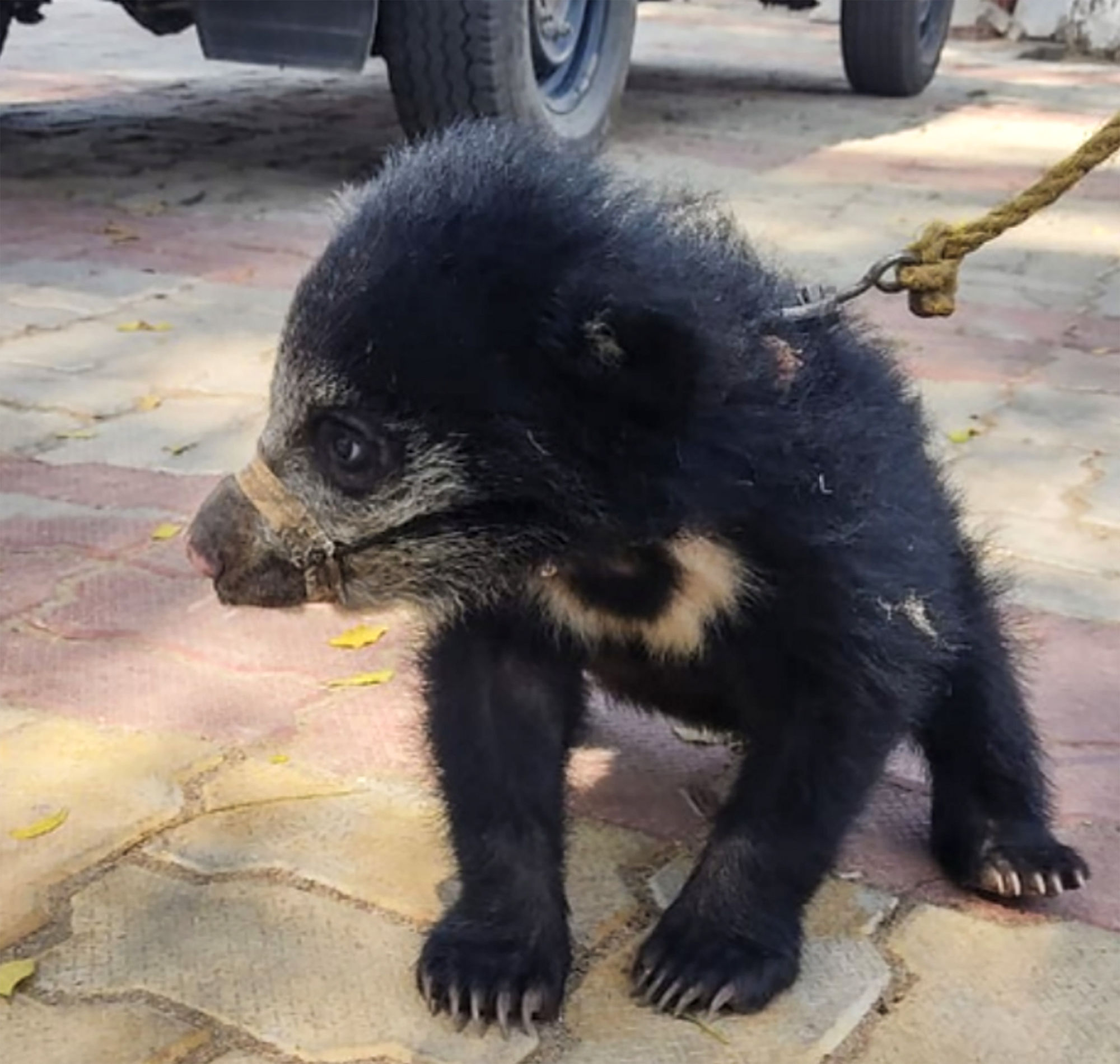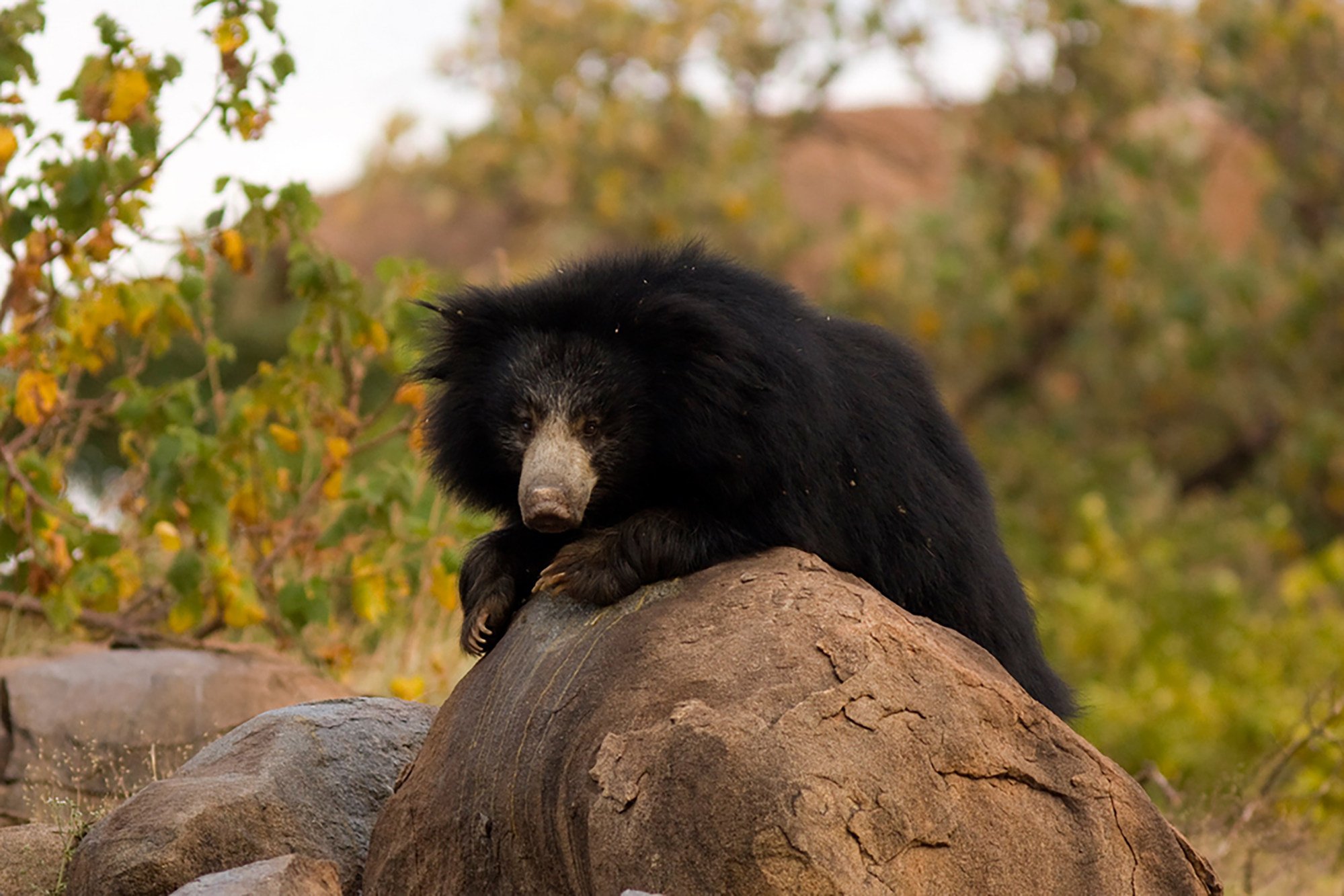
Activists thought they’d rescued India’s last dancing bear. Sadly, they were mistaken
- India outlawed forcing bears to dance for entertainment in 1972, with animal-rights groups heralding the rescue of the last one in captivity in 2009
- But the grisly, painful practice is now seeing a resurgence, according to activists, who blame it on remote forest tribesmen’s ‘operational memory’
Conservation conference weighs plight of India's bears at hands of villagers
Since then, forest department officials have seized five more bears across villages in Bihar and neighbouring Jharkhand state.
“[This] points to a resurgence [of people forcing bears to dance],” said Jose Louies, enforcement chief at the Wildlife Trust of India.
“It’s not just money that villagers pay to see the bear. Once you have a crowd, you can sell them bear hair, claws, or nails as lucky charms to make money,” he said.
India banned the practice of forcing bears to dance in 1972, but critics say enforcement is lacking. The Wildlife Trust of India, Wildlife SOS and many other environmental groups have worked for years with the nomadic Kalandar tribe – which traditionally relied on dancing bears for their livelihoods – to persuade them to stop the practice.

For four centuries, the Kalandar tribe has specialised in finding and killing mother bears in India’s forests to take cubs for “training”.
Advocacy and environmental groups have taught the tribe other skills such as driving, accountancy, carpet weaving, bicycle repair and welding, to introduce new sources of income for them that do not involve bears.
But some “Kalandars who fail to succeed in their new jobs might have been tempted to go back to their old ways”, Louies said.
He called it “operational memory”, meaning that the practice is likely to resurface as long as some of the tribesmen possess the knowledge of how to locate and hunt the bears.

Sloth bears, with their shaggy black fur and long noses, are forced to perform by having their noses and jaws pierced with a hot iron rod so that a coarse rope can be passed through the open wound and into the roof of their mouths.
Bear handlers tug on this rope, with the pain making the bear move in what looks like a dance. Handlers also break the bear’s teeth and claws to make it easier to subdue the animal.
To date, more than 600 bears have been rescued and taken to animal sanctuaries in India after being forced to perform. Indian conservation NGO Wildlife SOS rescued what it though was the country’s last dancing bear in 2009, rehoming it at one of its sanctuaries in Agra.
The eight bears rescued in the past six weeks have been sent to rescue centres in Bihar and Jharkhand.
There are around 6,000-11,000 sloth bears left in the wild across India, according to Wildlife SOS figures from September last year. They are commonly found in the country’s central and northeastern regions, and are vulnerable to poaching and habitat loss.
“True Indian culture is based on compassion for animals and the constitution enshrines this compassion, so any form of animal cruelty should not be permitted even if it is an old tradition like dog fights, bull running or dancing bears,” said Hiraj Laljani, India-based media manager for People for the Ethical Treatment of Animals.


